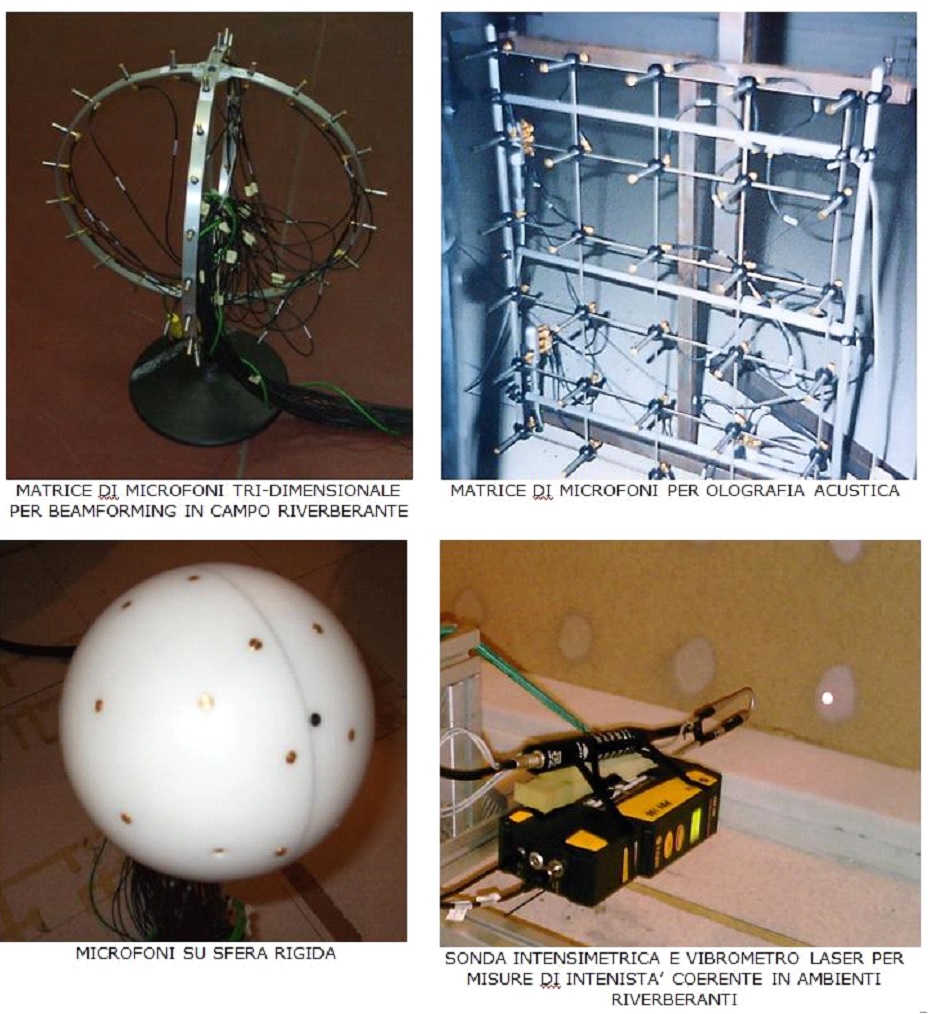The research activity carried out is focused on the development and application of innovative techniques for the localization of acoustic sources based on arrays of microphones, such as near-field Acoustic Holography and Beamforming and the estimation of sound field propagation in three-dimensional environments using analytical (Acoustic Holography) and numerical (BEM and FEM) methods.

The research activity of the Acoustic Measurement lab is aimed at the development of measurement procedures and innovative methods for the characterization of the acoustic emission of components. In particular, innovative procedures are developed by updating and customising existing commercial systems to meet specific application needs, such as, for example, the use of acoustic holography. In other cases, completely new methods are developed to suit measurement needs which are not met by available systems, which is the case, for example, of Beamforming used for the identification of acoustic sources in diffuse and reverberant environments or coherent intensimetry used for the mapping of the acoustic transparency of panels.
The activity is carried out within collaborations with national and international companies, such as CRF- Fiat Research Centre, Bridgestone, Volkswagen, Société de Chemin de Fer, and European funded projects.
In particular, EU funded projects regarding vibro-acoustics are:
